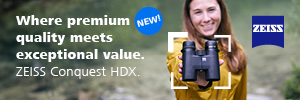CharleyBird
Well-known member

I'm interested to know what experienced astronomers consider their ultimate astro-binocular and why;
(we live under bortle 5 skies with b3 close by, I don't wear glasses).
1. Your choice for the best hand held binocular available for astronomy?
2. Adding a second, the best large & heavy binocular used on a mount?
(we live under bortle 5 skies with b3 close by, I don't wear glasses).
1. Your choice for the best hand held binocular available for astronomy?
2. Adding a second, the best large & heavy binocular used on a mount?







